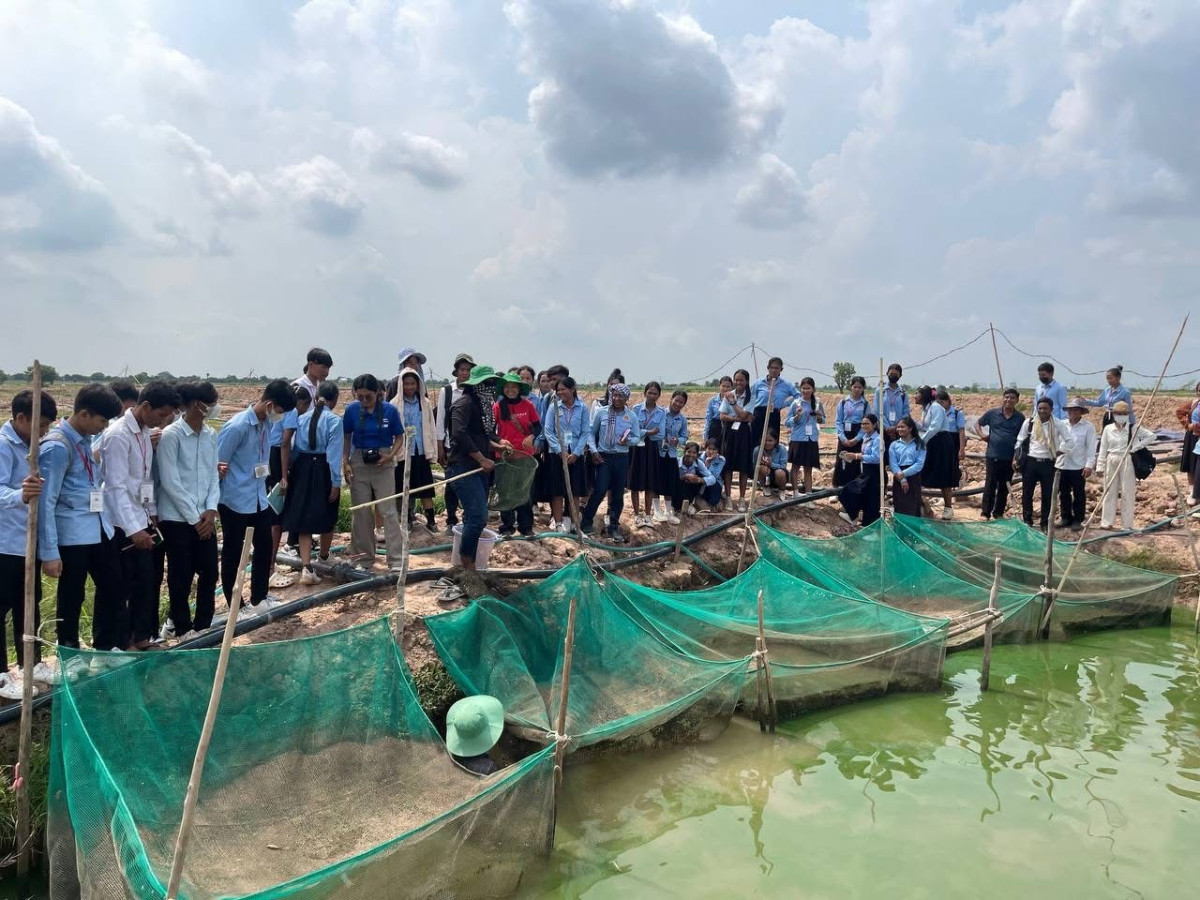Growing Aquaculture Skills for Cambodian Students’ Futures
Published: Jul 10, 2025 Reading time: 2 minutes Share: Share an articleWe took Cambodian students from classrooms to farms! To introduce students and teachers from technical high schools to hands-on experience, we organised a two-site exposure visit to bridge classroom learning with real-world aquaculture practice.
The visit included 47 students and 9 technical teachers from Preah Bat Samdach Preah Borom Neat Norodom Sihamoni General and Technical High School in Kampong Chhnang Province. We took them to Sovan Rung Rerng Farm, a private aquaculture facility, and the Royal University of Agriculture, a leading academic institution.
The visit provided students and teachers with hands-on experience, introduced them to modern aquaculture techniques, and helped them understand how aquaculture systems function outside the classroom.

One of the students, Em Seyha, a first-year livestock student, had long been interested in animal feeding and production. However, he only discovered that vocational training in livestock was available at the high school level when Sihamoni GTHS conducted a school outreach campaign.
During our visit, Seyha learned about advanced aquaculture equipment and witnessed practical farm operations for the first time. He observed how modern tools were used in daily tasks such as water filtration, temperature control, hatchery management, and live feed production. Seeing these technologies in action helped him connect the dots between theory and practice, giving him a clearer picture of how professional fish farms are managed.
“I was really excited to see the modern equipment at both the farm and the university,” he said. “There was so much to learn—from tools used for fish production to how live feed is prepared”
The visit offered more than just exposure; it delivered applicable knowledge. Seyha gained hands-on insights into fish feeding methods, water quality management, and fish hatching techniques, which he believes will enhance his practical sessions back at school.
“I now understand how each process plays an important role in successful fish production. I feel more confident and better prepared for future internships,” he added.
Beyond technical skills, this visit inspired students with new ideas for classroom activities and gave them a firsthand view of the diverse career opportunities in Cambodia’s growing aquaculture sector. Seeing real work environments helped students better understand the field and motivated them to pursue their studies with greater focus and enthusiasm.
“I learned about new farming systems and how aquatic centres function at the university level. It gave me both practical knowledge and motivation for my future,” Seyha concluded.
This exposure visit helped turn student curiosity into fundamental skills and confidence by taking learning beyond the classroom. It showed how hands-on experience can strengthen technical education, inspire students, and help them choose clear career paths. More importantly, it helped build a skilled workforce ready to support Cambodia’s growing and sustainable aquaculture industry. This kind of educational experience supports a brighter future for the students.
These activities are part of our “Streamlining Aquaculture in Cambodia’s Vocational Education” project, which was conducted in partnership with the Vocational Orientation Department.


